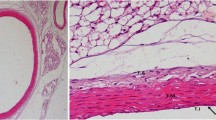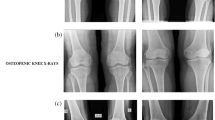Abstract
Automatic CT segmentation of proximal femur has a great potential for use in orthopedic diseases, especially in the imaging-based assessments of hip fracture risk. In this study, we proposed an approach based on deep learning for the fast and automatic extraction of the periosteal and endosteal contours of proximal femur in order to differentiate cortical and trabecular bone compartments. A three-dimensional (3D) end-to-end fully convolutional neural network (CNN), which can better combine the information among neighbor slices and get more accurate segmentation results by 3D CNN, was developed for our segmentation task. The separation of cortical and trabecular bones derived from the QCT software MIAF-Femur was used as the segmentation reference. Two models with the same network structures were trained, and they achieved a dice similarity coefficient (DSC) of 97.82% and 96.53% for the periosteal and endosteal contours, respectively. Compared with MIAF-Femur, it takes half an hour to segment a case, and our CNN model takes a few minutes. To verify the excellent performance of our model for proximal femoral segmentation, we measured the volumes of different parts of the proximal femur and compared it with the ground truth, and the relative errors of femur volume between predicted result and ground truth are all less than 5%. This approach will be expected helpful to measure the bone mineral densities of cortical and trabecular bones, and to evaluate the bone strength based on FEA.
Graphical abstract











Similar content being viewed by others
References
Johannesdottir F, Turmezei T, Poole KE (2014) Cortical bone assessed with clinical computed tomography at the proximal femur. J Bone Miner Res 29(4):771–783. https://doi.org/10.1002/jbmr.2199
Engelke K et al (2015) Clinical use of quantitative computed tomography (QCT) of the hip in the management of osteoporosis in adults: the 2015 ISCD official positions part I. J Clin Densitom 18(3):338–358. https://doi.org/10.1016/j.jocd.2015.06.012
Engelke K (2017) Quantitative computed tomography—current status and new developments. J Clin Densitom 20(3):309–321. https://doi.org/10.1016/j.jocd.2017.06.017
Black DM et al (2008) Proximal femoral structure and the prediction of hip fracture in men: a large prospective study using QCT. J Bone Miner Res 23(8):1326–1333. https://doi.org/10.1359/jbmr.080316
Manskeet SL et al (2009) Cortical and trabecular bone in the femoral neck both contribute to proximal femur failure load prediction. Osteoporos Int 20(3):445–453. https://doi.org/10.1007/s00198-008-0675-2
Pahr DH, Zysset PK (2016) Finite element-based mechanical assessment of bone quality on the basis of in vivo images. Curr Osteoporos Rep 14(6):374–385. https://doi.org/10.1007/s11914-016-0335-y
Gong H et al (2012) Relationships between femoral strength evaluated by nonlinear finite element analysis and BMD, material distribution and geometric morphology. Ann Biomed Eng 40(7):1575–1585. https://doi.org/10.1007/s10439-012-0514-7
Bisheh H et al (2020) Hip fracture risk assessment based on different failure criteria using QCT-based finite element modeling. Comput Mater Continua 63(2):567–591
Cheng Y et al (2013) Automatic segmentation technique for acetabulum and femoral head in CT images. Pattern Recogn 46(11):2969–2984. https://doi.org/10.1016/j.patcog.2013.04.006
Arezoomand S et al (2015) A 3D active model framework for segmentation of proximal femur in MR images. Int J CARS 10(1):55–66. https://doi.org/10.1007/s11548-014-1125-6
Almeida DF et al (2016) Fully automatic segmentation of femurs with medullary canal definition in high and in low resolution CT scans. Med Eng Phys 38(12):1474–1480. https://doi.org/10.1016/j.medengphy.2016.09.019
Kim J et al (2017) Fully automated segmentation of a hip joint using the patient-specific optimal thresholding and watershed algorithm. Comput Methods Programs Biomed 154:161–171. https://doi.org/10.1016/j.cmpb.2017.11.007
Perone CS, Cohen-Adad J (2019) Promises and limitations of deep learning for medical image segmentation. J Med Artif Intell 2:1–1. https://doi.org/10.21037/jmai.2019.01.01
Hesamian MH et al (2019) Deep learning techniques for medical image segmentation: achievements and challenges. J Digit Imaging 32(4):582–596. https://doi.org/10.1007/s10278-019-00227-x
Zhu L et al (2019) An automatic classification of the early osteonecrosis of femoral head with deep learning. CMIR 16(10):1323–1331. https://doi.org/10.2174/1573405615666191212104639
Chen F et al (2019) Three-dimensional feature-enhanced network for automatic femur segmentation. IEEE J Biomed Health Inform 23(1):243–252. https://doi.org/10.1109/JBHI.2017.2785389
Treece GM, Gee AH (2015) Independent measurement of femoral cortical thickness and cortical bone density using clinical CT. Med Image Anal 20(1):249–264. https://doi.org/10.1016/j.media.2014.11.012
Treece GM et al (2012) Imaging the femoral cortex: thickness, density and mass from clinical CT. Med Image Anal 16(5):952–965. https://doi.org/10.1016/j.media.2012.02.008
Wang L et al (2020) Muscle density discriminates hip fracture better than computed tomography X-ray absorptiometry hip areal bone mineral density. J Cachexia Sarcopenia Muscle 11(6):1799–1812. https://doi.org/10.1002/jcsm.12616
Wang L et al (2018) QCT of the femur: comparison between QCTPro CTXA and MIAF Femur. Bone 120:262–270. https://doi.org/10.1016/j.bone.2018.10.016
Shorten C, Khoshgoftaar TM (2019) A survey on image data augmentation for deep learning. J Big Data 6(1):60. https://doi.org/10.1186/s40537-019-0197-0
Milletari F et al (2016) V-Net: fully convolutional neural networks for volumetric medical image segmentation. In: 2016 Fourth International Conference on 3D Vision pp 565–571. https://doi.org/10.1109/3DV.2016.79
Deniz CM et al (2018) Segmentation of the proximal femur from MR images using deep convolutional neural networks. Sci Rep 8:16485. https://doi.org/10.1038/s41598-018-34817-6
Yu D et al (2014) Mixed pooling for convolutional neural networks. In: Int conference Rough Sets Knowledge Technol. https://doi.org/10.1007/978-3-319-11740-9_34
Kingma D P, Ba J (2014) Adam: a method for stochastic optimization. arXiv:1412.6980. https://arxiv.org/abs/1412.6980
Taha A, Hanbury A (2015) Metrics for evaluating 3D medical image segmentation: analysis, selection, and tool BMC Med Imaging. 15(29). https://doi.org/10.1186/s12880-015-0068-x
Poole KE et al (2012) Cortical thickness mapping to identify focal osteoporosis in patients with hip fracture. PLoS ONE 7(2):e38466. https://doi.org/10.1371/journal.pone.0038466
Ronneberger O et al (2015) U-Net: convolutional networks for biomedical image segmentation. arXiv:1505.0459. https://arxiv.org/abs/1505.04597
Knowles NK (2016) Quantitative computed tomography (QCT) derived bone mineral density (BMD) in finite element studies: a review of the literature. J EXP ORTOP 3(1):36. https://doi.org/10.1186/s40634-016-0072-2
Acknowledgements
We thank Klaus Engelke of FAU, Germany, for his technical help and comments.
Funding
This work was supported in part by the Shaanxi Provincial Natural Science Foundation of China (Grant No. 2020SF-377), Xi’an Key Laboratory of Advanced Controlling and Intelligent Processing (ACIP), China (2019220714SYS022CG044). L. Wang and X. Cheng’s work was also in part supported by the National Natural Science Foundation of China (Grant Nos. 81901718, 81771831, 81971617), the Beijing Natural Science Foundation-Haidian Primitive Innovation Joint Fund (Grant No. L172019), and Beijing JST Research Funding (Grant No. 8002–903-02).
Author information
Authors and Affiliations
Corresponding author
Additional information
Publisher's note
Springer Nature remains neutral with regard to jurisdictional claims in published maps and institutional affiliations.
Yu Deng and Ling Wang are joint first authors.
Rights and permissions
About this article
Cite this article
Deng, Y., Wang, L., Zhao, C. et al. A deep learning-based approach to automatic proximal femur segmentation in quantitative CT images. Med Biol Eng Comput 60, 1417–1429 (2022). https://doi.org/10.1007/s11517-022-02529-9
Received:
Accepted:
Published:
Issue Date:
DOI: https://doi.org/10.1007/s11517-022-02529-9




